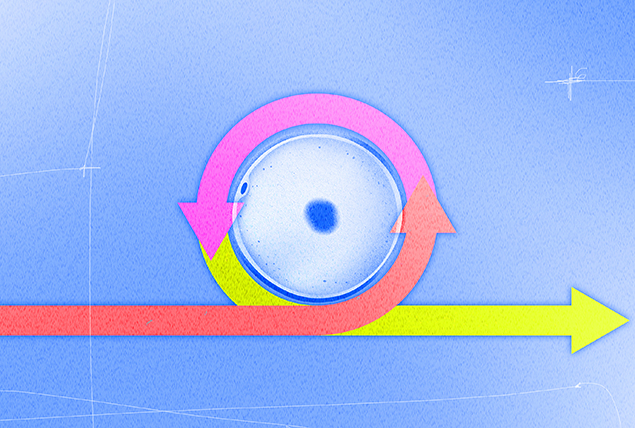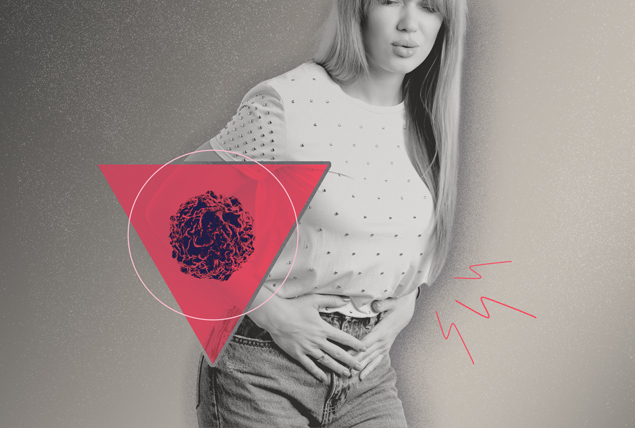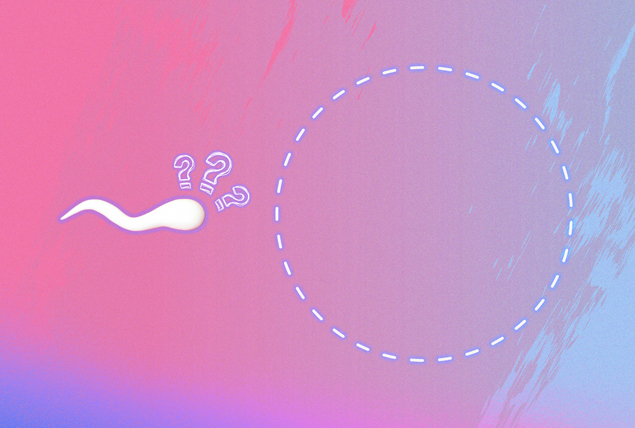Mittelschmerz: The Mid-Cycle Ovulation Pain You've Never Heard Of

This humorous-sounding name aside, mittelschmerz, or ovulation pain, is a valid health concern affecting some menstruating women. Mittelschmerz is not a disease but can be a source of mid-cycle pain, stress and anxiety.
As a person who experiences mittelschmerz, I often feel faint and break out into a sweat from the severity of the pain and have to sit or lie down for about five to 10 minutes.
What is mittelschmerz?
Mittelschmerz is one of the lesser-known occurrences of the reproductive cycle for women. It's a medical term derived from the German words for "middle" and "pain."
It may affect up to 40 percent of women during their reproductive years, according to Cleveland Clinic.
Mittelschmerz will usually occur about 14 days prior to the start of a period, "and it usually lasts for one or two days," said Suzanne Weber, M.D., a board-certified gynecologist in the Denver area. For some, the pain can last less than a day and "may also be accompanied by a small amount of [ovulation] bleeding or discharge."
Mittelschmerz could feel like a sharp stabbing or pinching pain, 'a one-sided dull ache' or 'sharp or severe'
Discomfort may result from the egg bursting through the ovary's surface or leaking fluid into the pelvis, Weber added. As the ovary releases an egg each month, the pain will be determined by "whichever ovary develops a dominant follicle," which means it won't necessarily alternate left and right.
However, no one really knows for sure—and there hasn't been much research since a 1980 study. Some hypothesize that mittelschmerz could be due to the contraction-like effect the luteinizing hormone (LH), or hormone made in the pituitary gland, has on the perifollicular smooth muscle.
Why does mittelschmerz occur during ovulation?
Mittelschmerz is an ovulation-specific phenomenon. If you're tracking your menstrual cycle and have lower abdominal pain outside your ovulation window, you're not experiencing mittelschmerz. Regular annual exams can help you navigate the complexities of your cycle.
Even though mittelschmerz occurs during ovulation, it isn't necessarily a monthly occurrence. Some people experience mittelschmerz every month, while others experience it only occasionally or not at all, according to Weber.
She emphasized that individuals on certain types of contraceptives, "like combination oral contraceptive pills," won't experience ovulation and will not experience mid-cycle pain.
What does mittelschmerz feel like?
Mittelschmerz will feel different for every person who experiences it. It could feel like a sharp stabbing or pinching pain. It can be "a one-sided dull ache" or "sharp or severe," Weber said.
Depending on the severity of the pain, it can lead to nausea, vomiting and lightheadedness, among other symptoms. Some people experience pain that is debilitating enough to require time off work.
Why is diagnosing mittelschmerz challenging?
Mittelschmerz isn't dangerous in any way. It's simply the body reacting to a specific moment in the menstrual cycle. But that doesn't mean it should be taken any less seriously than other types of pain, especially if it is severe.
It can be tricky to diagnose, given its transient nature and the absence of physical evidence after the pain subsides. It is primarily a diagnosis of exclusion, which means it is diagnosed by ruling out all other causes of abdominal pain before settling on mittelschmerz.
Scar tissue, endometriosis and sexually transmitted infections (STIs) are sometimes mistaken for mittelschmerz, according to the NHS. A thorough medical history focusing on the pain's timing, nature and cyclical pattern can help with a diagnosis.
What should you do if you're experiencing mittelschmerz-related pain?
If you're experiencing pain that could be mittelschmerz, see your doctor to confirm the diagnosis and talk about your pain-management options. There are ways to help reduce the severity of symptoms or alleviate them altogether.
Ibuprofen and other nonsteroidal anti-inflammatory drugs (NSAIDs) are the mainstays of treatment, according to Greg Marchand, M.D., an accredited master surgeon and OB-GYN in Mesa, Arizona. NSAIDs can help to relieve the pain and minimize the inconvenience in mild cases.
For more severe cases, however, Marchand recommends preventing ovulation to make the pain go away.
"As long as you are not trying to get pregnant, this is easily accomplished with a birth control pill or the birth control injection," Marchand said.
As mittelschmerz can only happen when a person is ovulating, stopping ovulation means stopping this painful little phenomenon.
The goal of using certain types of contraception is not to prevent pregnancy—this is not the goal of treatment—but rather their effect on the menstrual cycle, according to Ashley Christiansen, D.O., an OB-GYN in Trumbull and Bridgeport, Connecticut.
An intrauterine device, or IUD, can prevent pregnancy but won't stop ovulation, while contraceptive pills typically stop ovulation, Christiansen said.
So even if you have other forms of birth control in place, it's worth talking to your doctor if you suspect you're experiencing mittelschmerz. There may be a form of contraception better suited to preventing pregnancy and thwarting ovulation pain.
However, if you experience nausea or new pain in your pelvis or have heavy bleeding between periods or a fever, it could be a more serious health condition. These conditions could include pelvic inflammatory disease (PID), appendicitis, or (rarely) ectopic pregnancy, according to Mayo Clinic. See your doctor for peace of mind.
The bottom line
Mittelschmerz is a natural part of the reproductive cycle. It's not a disease or a disorder but a sign of regular ovulation. If you're experiencing pain, schedule a visit with your physician to figure out the problem and get the help you need. The answer could be as simple as over-the-counter pain relievers to reduce painful cramping, twinges of discomfort or pelvic pain, or birth control to stop ovulation.


















